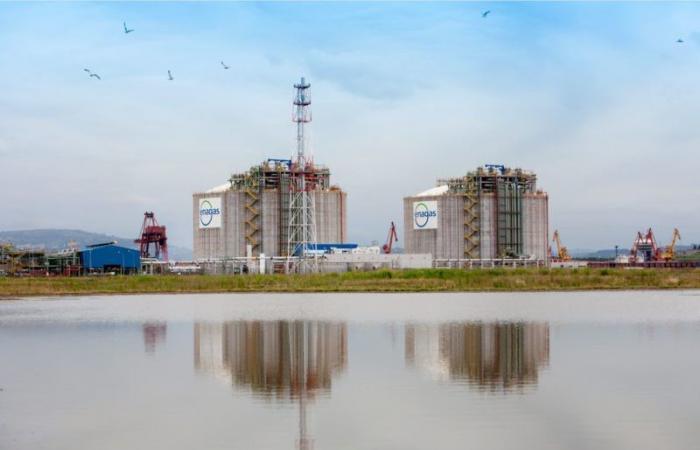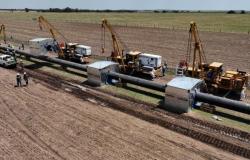The National Integrated Energy and Climate Plan (PNIEC) will be approved at the end of June and It does not clearly define when the end of gas will be in Spain. What is clear is that it will not arrive before 2030, and that there will not be a reduction in that period either. Despite the expansion of the renewable supply, the emissions reduction objectives are below the 55% established by the European Commission, which is largely caused by the limited electrification of energy demand that the Plan proposes for the year. 2030. Gas is still alive and will continue to be alive if ambitious and decisive measures are not proposed to abandon it.
Last December, the European Commission (EC) issued its recommendations to the National Energy and Climate Plans presented by the Member States. In them, the EC alerted the Spanish State that the plan did not convincingly demonstrate how measures related to the reduction of gas demand are integrated into national planning for 2030; urging the country to establish clear and detailed measures to guarantee the structural reduction of fossil fuel.
In this sense, the network Gas is not a Solution has sent a document of proposals to MITECO where it highlights the risks that the continuity of fossil gas may pose in the energy system of Spain. There are still, in the PNIEC, risks and uncertainties as to how some fundamental issues will be addressed, especially those that concern fossil gas and the expansion of green hydrogen.
One of the fundamental points that the network raises in its document is that the PNIEC must Establish defined deadlines, concrete measures and monitoring for the gradual elimination of fossil gas in the electricity sector no later than the year 2030, and in the rest of the sectors no later than the year 2035. In this sense, they ask to prepare a plan for the progressive and annualized closure of the combined cycle plants, eliminating, respectively, the objective to promote new high-efficiency cogeneration that was included in the updated draft of the Plan and, in any case, framing within a closure plan for 2035 the auction processes aimed at extending the life of the cogeneration plants that are already in place currently in operation. In this regard, measure 4.3 of capacity markets, we defend that they should not continue giving economic support to combined cycles that we must abandon, since it would be financing polluting energies through a financial system that should be derived to technologies without associated GHG emissions.
Another of the proposals that stands out Gas is not a Solution is the imperative of carry out a detailed study of the international interconnection capacity needs, giving priority to the objectives of decarbonization and reduction of gas demand in the short, medium and long term. In this sense, the network rejects the PNIEC proposal to increase the gas infrastructure without a real analysis that supports it and that is compatible with the emissions reduction objectives of the European Union, in view, also, of a potential oversizing and subsequent extra cost of said infrastructure. In line with the rejection of the expansion of new gas infrastructure, the network reiterates its position against the reopening of the El Musel regasification plant, in Gijón.
When it comes to hydrogen, the network Gas is not a Solution considers that the H2Med initiative proposed in the PNIEC is untimely and It represents a commitment to the development of an infrastructure for which there is neither production nor real demand.. In this sense, the network considers that the PNIEC must be clear in rejecting the proposal for the continuity of H2Med, as well as the commitment that Enagás has expressed in relation to hydrogen to turn Spain into a hydrogen export hub at the European level. In this framework, the network highlights the following:
- It is urgent plan and size hydrogen production objectives in response to state needs, analyzing real demand in the short and medium term and the necessary renewable electricity and its approximate prices.
- In order to be able to interpret the quantitative hydrogen data projected by the model used in the PNIEC update, taking into account the new objective of 11 GW of electrolyzers, it is necessary a clarification regarding the parameterssuch as the equivalent hours of operation of the electrolyzers.
- It is necessary to define and specify if the strategy proposes that Hydrogen production plants would be interconnected to the electricity grid or if they would be off-grid production systems.
Network Gas is not a Solution continues to insist on these measures, and affirms that it will continue with its proposals and demands beyond the approval of the PNIEC. In the face of the existing delay in updating the Climate Change Law, the network considers it necessary for these proposals to be evaluated and vindicated if they really The Spanish State wants to move towards correct and rapid decarbonization; eliminating fossil gas from our lives.
A forum written by Sergio Bonati, Climate and Energy technician at WWF Spain, and Ismael Morales, head of Climate Policies at Fundación Renovables, both members of the Gas is no Solution network.









